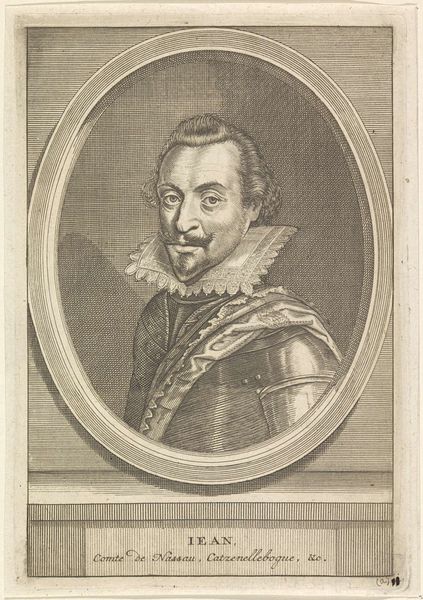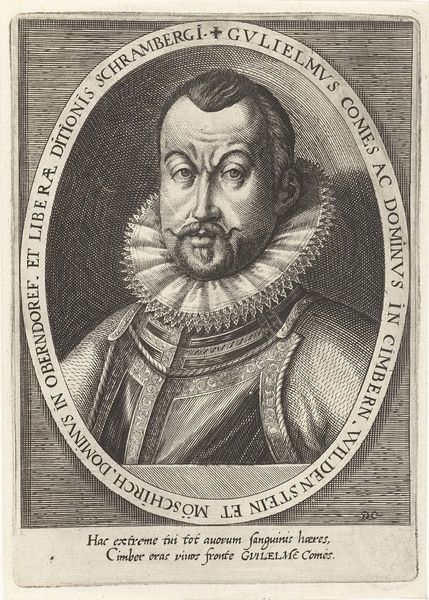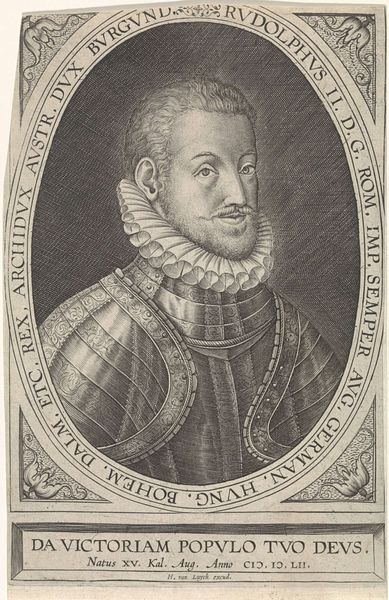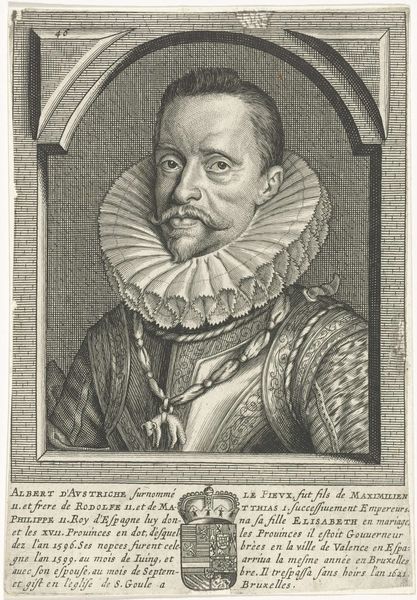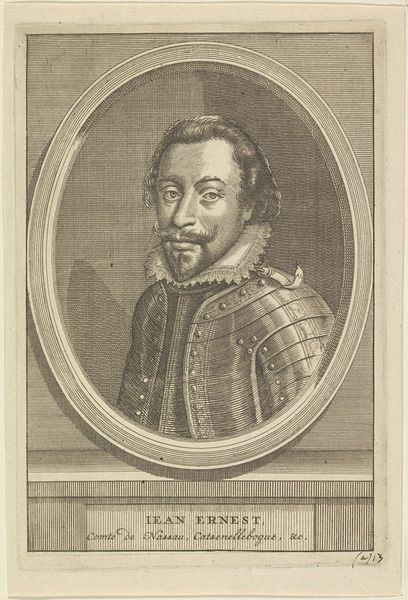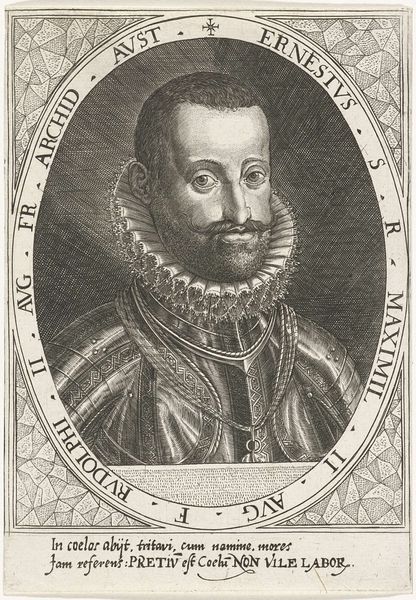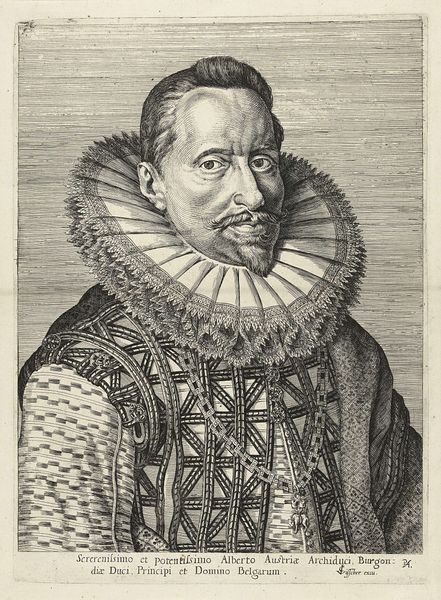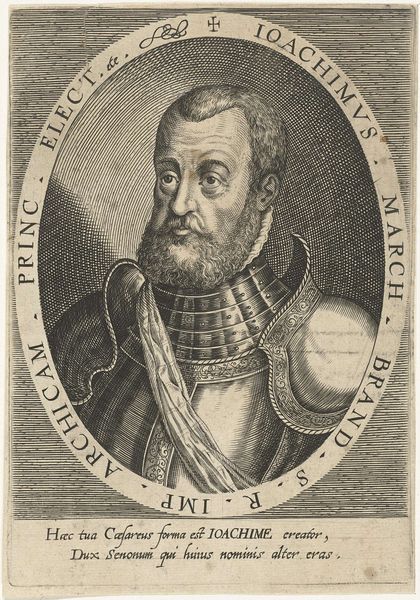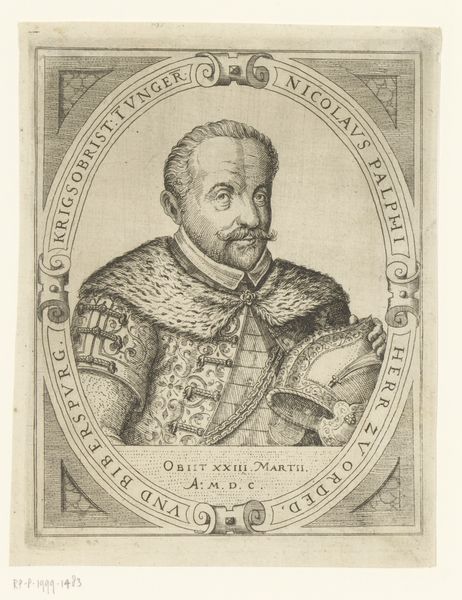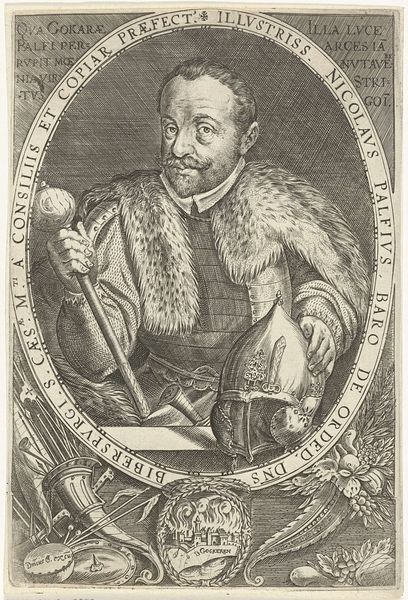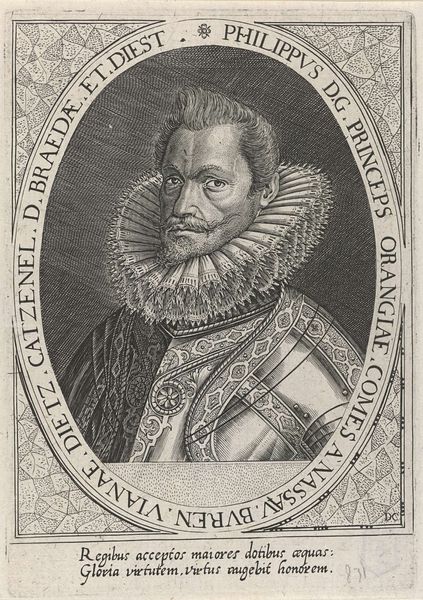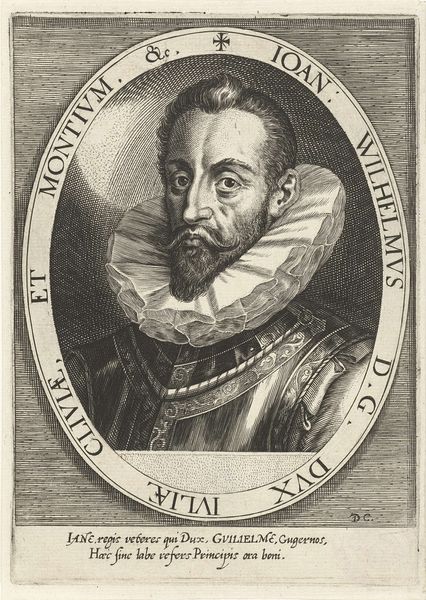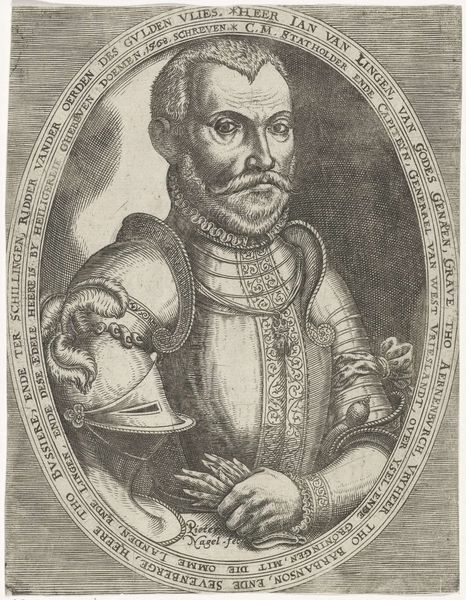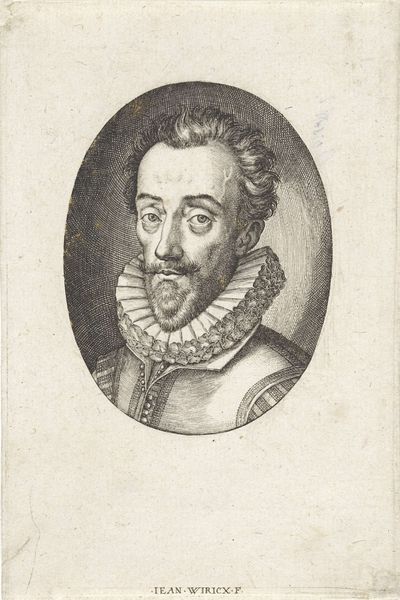
metal, engraving
#
portrait
#
metal
#
caricature
#
mannerism
#
portrait reference
#
history-painting
#
engraving
#
realism
Dimensions: height 261 mm, width 205 mm
Copyright: Rijks Museum: Open Domain
Curator: Isn’t this print mesmerizing? Agostino Carracci’s engraving, circa 1589, immortalizes Ferdinando de’ Medici, Grand Duke of Tuscany. What strikes you about it? Editor: Immediately? That cold steel armor. It radiates power but also...isolation. There's a definite chill emanating from the composition. The formal frill looks quite the contrary as a counterweight, like delicate snow piled atop cold rock. Curator: Absolutely, the technical skill is astonishing; you can almost feel the texture of the metal. But to me, it hints at something deeper. Ferdinando wasn't exactly known for his military prowess. It seems Carracci wants to create a symbolic visual for his reign, about strategy, influence, protection. Editor: A manufactured persona, then? I wonder about the positioning of the Medici coat of arms right beside him. It nearly touches his head. Perhaps Carracci’s highlighting of inherited power seeks to emphasize it above all other features – a divine blessing legitimizing all action, all chilliness. Curator: Fascinating. And look at his eyes – the expression is knowing, almost world-weary. Did he already recognize what it really cost to acquire power and manage such high social office? A subtle warning? A glimpse into the subject's spirit? Editor: Maybe, or is it a mask? These official portraits, especially of nobility, were very carefully constructed to convey certain ideals. And there it is; The Grand Duke wanted to seem strong, capable, worthy of the office and that he has inherited from the generations who went before. The steely gaze is nothing more than performative strength. A necessary strategy when power remains perpetually under siege by rival European interests. Curator: I love how his slightly tousled hair disrupts the perfect picture. It makes him look almost modern, human. Like there's still some untamed vitality in the guy. That ruffle collar threatens the overall rigid control as well, eh? Editor: Perhaps. And untamed vitality is quite the opposite of what history remembers: His rule cemented Tuscan subservience to the Papal States and ushered in economic decline and social regression. Curator: Right, art is not exactly like historical record; both need critical lenses, that is certain. It's just fascinating to consider these various readings the artist creates. It does suggest we reconsider what Ferdinando wanted us to see…and if his presentation ever truly resembled what was at hand. Editor: Indeed. Art is never neutral, and examining works like these helps us to unearth the hidden stories and power dynamics woven into our cultural narrative. Thank you to Ferdinando’s image that continues to keep giving, even now, 400 years on.
Comments
No comments
Be the first to comment and join the conversation on the ultimate creative platform.
